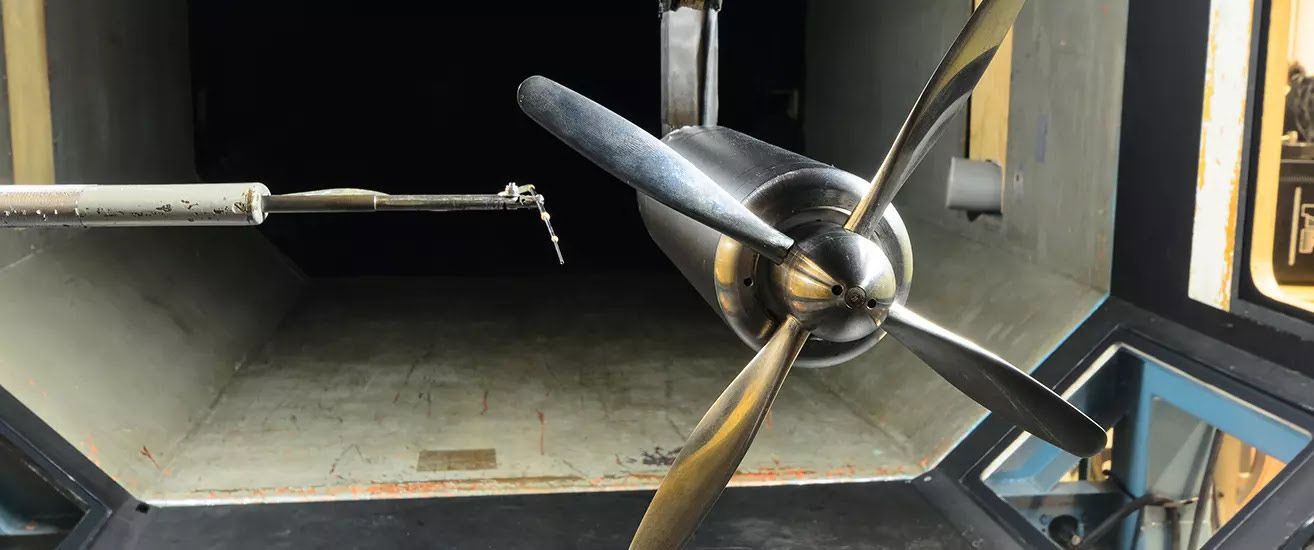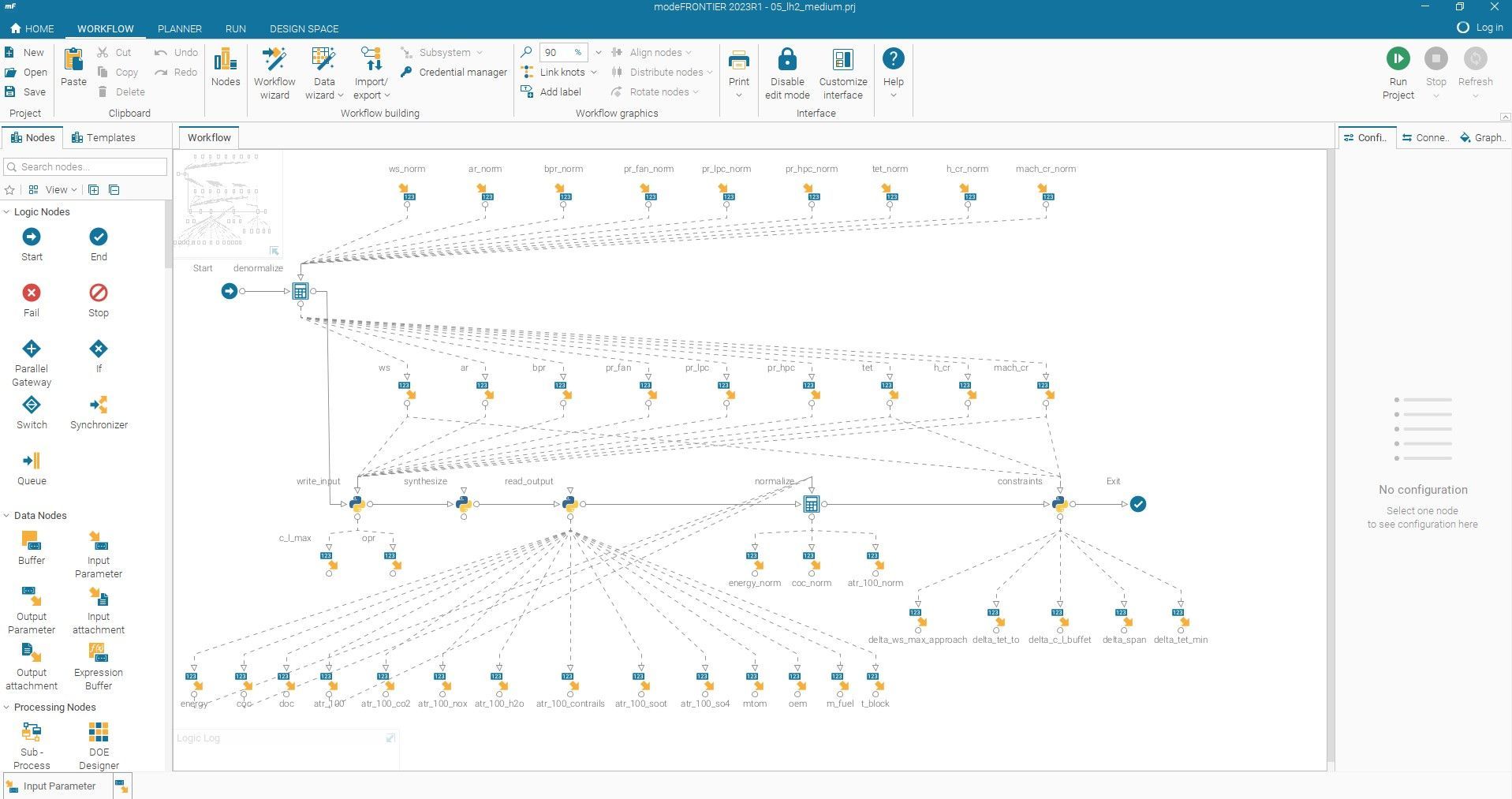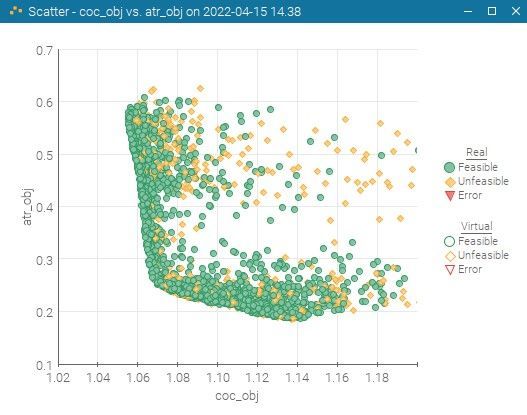Optimizing commercial aircraft designs to use future aviation fuels


- Institution: Delft University of Technology
- ESTECO Software Solution: modeFRONTIER
-
Benefits:modeFRONTIER Python interface made it possible to orchestrate in-house tools for aerodynamics, propulsion, mission analysis, mass estimation and climate impactEasy-to-use parallel coordinates and scatter matrix charts were very helpful in gaining conceptual insightsFaster and user-friendly multi-objective optimization and post-processing
Pieter-Jan Proesmans, PhD Candidate in the Flight Performance & Propulsion group at Delft University of Technology, used modeFRONTIER to perform multi-objective aircraft design optimization to compare future aviation fuels.
“The modeFRONTIER post-processing tools for DOE or optimization results allow aircraft design researchers to verify the design solutions and trends quickly”
Challenge
This research has been undertaken in the framework of the GLOWOPT project sponsored by the EU’s Clean Sky 2 program, and under the supervision of Dr.Ir. Roelof Vos, associate professor at Delft University of Technology. The objective is the development and validation of Climate Functions for Aircraft Design (CFAD) with respect to minimizing global warming and their application to the Multidisciplinary Design Optimization (MDO) of next-generation aircraft for relevant market segments.
To reach this goal, novel fuels, such as liquid hydrogen (LH2) and sustainable aviation fuel (SAF) can provide more sustainable solutions. However, the climate objective conflicts with the typical design objective of minimal operating costs. While these two fuels can offer a significant reduction in climate impact, they are also more expensive and have consequences for the aircraft design (in the case of cryogenic LH2 tanks).
Solution
The modeFRONTIER Multidisciplinary Design Optimization (MDO) framework was selected to investigate the climate impact reduction and operating costs for hydrogen and SAF fuel in regional, medium-range and long-range aircraft categories. The cost-optimal, kerosene-powered aircraft served as the reference case for all multidisciplinary aircraft design optimizations. The MDO process was set-up in a modeFRONTIER workflow. Its Python interface made it possible to orchestrate in-house tools for aerodynamics, propulsion, mission analysis, mass estimation and climate impact. Next, the optimization strategy was executed.
The pilOPT algorithm evaluated thousands of configurations by changing airframe, turbofan engine and mission design variables to obtain the cost versus climate trade-off for all fuel types in the three aircraft categories.

Benefits
“The easy-to-use parallel coordinates and scatter matrix charts were very helpful in gaining conceptual insights. One of the key finding was that the SAF-powered aircraft are preferred over the cost-optimal hydrogen aircraft for the regional and medium-range categories. With modeFRONTIER, we could perform the multi-objective optimization and post-processing in a much faster and user-friendly way compared to when we had to rely on programming libraries. In the future, we will investigate how to combine the aircraft optimization with a network allocation routine to update not only aircraft design variables, but also top-level aircraft requirements” said Pieter-Jan Proesmans, PhD Candidate in the Flight Performance & Propulsion group at Delft University of Technology.


The Delft University of Technology is the oldest and largest Dutch public technical university, located in Delft, Netherlands. As of 2022 it is ranked by QS World University Rankings among the top 10 engineering and technology universities in the world. In 2023 it was ranked 2nd in the world in civil engineering, 3rd in the world in mechanical and aerospace engineering, and 3rd in the world in architecture.


